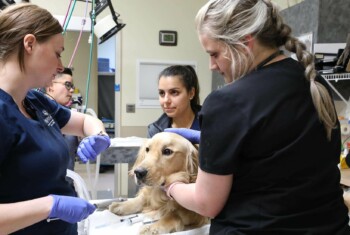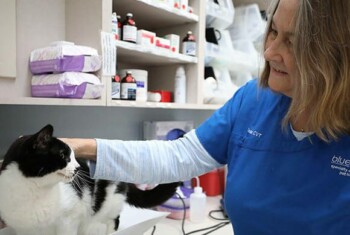Protecting patients from the effects of medical adhesive-related skin injuries.
 How many of us have removed tape from a patient’s skin and stripped the outer layer of skin or even worse, torn the skin full thickness? On a lesser level, have you seen significant redness after tape removal? These are all examples of medical adhesive related skin injury (MARSI). Many types of adhesives are used in medicine. Did you know that all of them are based on PSA technology? PSAs are pressure sensitive adhesives. The adhesives actually work better when applied with a small amount of pressure and heat.
How many of us have removed tape from a patient’s skin and stripped the outer layer of skin or even worse, torn the skin full thickness? On a lesser level, have you seen significant redness after tape removal? These are all examples of medical adhesive related skin injury (MARSI). Many types of adhesives are used in medicine. Did you know that all of them are based on PSA technology? PSAs are pressure sensitive adhesives. The adhesives actually work better when applied with a small amount of pressure and heat.
Yes, the old wives’ tale of squeezing the tape does make it stick better. However, that tape can also cause problems. MARSI may not seem like an issue, and in the past, it was not seriously addressed. However, in today’s online world of instant reviews, MARSI can result in PR issues as well as medical problems for the patient. The wrong client with a large public following can create unwanted publicity for any hospital. The reality is none of these are new issues, but our accountability for complications has become very public in recent years.
MARSI.
MARSI is a relatively new terminology in the field of human medicine. In 2012, a panel of experts created the following definition of MARSI: “A medical adhesive-related skin injury is an occurrence in which erythema and/or other manifestation of cutaneous abnormality (including, but not limited to, vesicle, bulla, erosion, or tear) persists 30 minutes or more after removal of the adhesive.” This topic has not been discussed in veterinary medicine.
Self-renewing skin.
As one of the largest organs of the body, the skin is constantly self-renewing. It functions as a first line of defense against microorganisms, UV radiation, and toxins, as well as maintaining hydration of the body. Skin damage can, therefore, have significant consequences for the patient. MARSI is recognized as the primary cause of skin breakdown in human neonatal ICUs.
The damage to the epidermis can result in toxicity from increased absorption of topical agents or create a point of access for bacterial pathogens, which may reside on your hospital surfaces or the patient’s own skin. While not a likely concern for the average veterinary patient, it is certainly an issue for the critical, small neonatal, or elderly veterinary patients.
Hospital-acquired skin injury may also affect the final cost of care. The cost of a case of MARSI is not limited to the actual dollars involved in correcting a complication. In today’s competitive environment, complications can adversely affect the reputation of a hospital. Social media postings of complications can affect future potential clients. Our aim is “do no harm,” but minimizing complications is just good business.
Understanding medical adhesives requires some knowledge of the physics of adhesion and the physical properties of the adhesives. The ideal skin adhesive should keep dressings and equipment securely in place while minimizing the potential of skin allergy complications. It should be breathable and at the same time be removable while minimizing pain and skin damage. One study of 90 dogs showed delayed hair regrowth at the fentanyl patch site in 12% of the patients. Whether these changes were secondary to the adhesive, fentanyl, or an interaction between the two is unknown.
Tale of the tape.
Medical adhesive-related skin injury can result in dermatitis or mechanical injury. Dermatitis from MARSI is classified as either irritant contact dermatitis (ICD) or allergic dermatitis (AD). ICD is limited to the surface area covered by the adhesive and caused by chemical irritation from the adhesive. The defined area is erythematous but does not extend outside the area of the adhesive contact and is generally short-lived.
ICD is associated with one or more components of the adhesive and has therefore been seen with most dressings and some adhesive removers. By contrast, ACD, considered rare, is a cell-mediated immune response that extends outside of the area covered by the adhesive and may persist for a week in duration.
 Mechanical damage occurs when the bond between the adhesive and skin is stronger than the intracellular bonds. Removal of tapes or dressings will stretch the skin and may be accompanied by some loss of superficial epidermal cells.
Mechanical damage occurs when the bond between the adhesive and skin is stronger than the intracellular bonds. Removal of tapes or dressings will stretch the skin and may be accompanied by some loss of superficial epidermal cells.
Repeated adhesive removal can result in significant skin damage known as epidermal skin stripping. This results in pain, inflammation, and disruption of the normal skin barrier protective function. Silicone-based adhesives are the one adhesive that minimizes skin stripping, so repositioning of the adhesive is possible with minimal damage. The most at-risk patients are those with thin skin including the elderly, neonates and certain disease populations (Ehlers-Danlos syndrome). Damage caused by tape stripping was seen in 17% of patients in one human pediatric study. There are no published studies on medical adhesive-related skin stripping in the veterinary population.
Progress and prognosis.
Other types of mechanical damage associated with MARSI include tension blisters and skin tears. Tension blisters in human hip and knee surgery have been reported at rates as high as 41%. Skin tears occur when the friction or shear force causes a partial or full thickness tear of the skin. Skin tears are a significant problem in elderly human populations. Reported prevalence rates of skin tears range from 2 to 54% of the studied populations. There are no published studies on medical adhesive-related skin tears in the veterinary population.
The increased use of silicone-based adhesives in human medicine is partially due to a newer emphasis on quality-of-life issues for their patients. Prevention of MARSI begins with appropriate dressing choice and application, but proper removal may be more important. If a wound is present, the direction of removal is important. The dressing should be marked with the correct direction for removal to help avoid iatrogenic damage to a wound.
Our field is constantly evolving, and like human medicine, it is developing a stronger focus on patient comfort and quality of life. While our focus on patient care has shifted, our adhesive options remain little changed. While we wait on improved medical adhesives in veterinary medicine, we can minimize medical adhesive-related skin injuries with careful selection from our current adhesive options.


